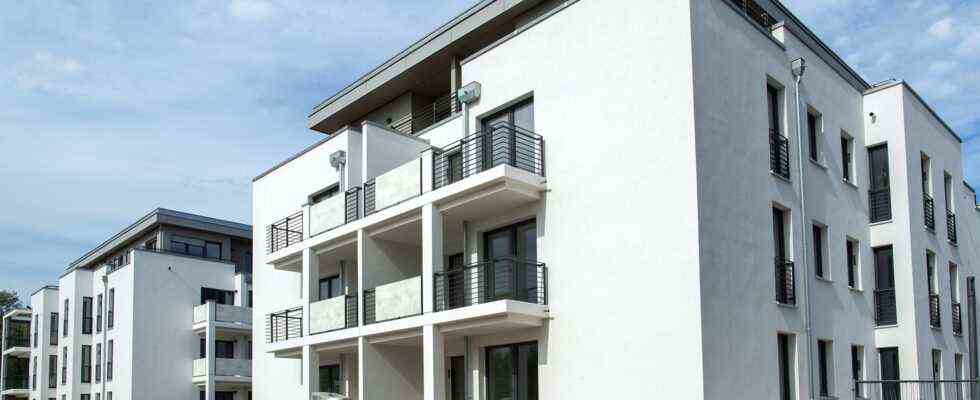background
Status: 24.06.2021 4:47 p.m.
So far, rising house prices have not been reflected in the inflation rate. They are not even taken into account there. The ECB wants to change that – but experts do not go far enough.
From Angela Göpfert,
tagesschau.de
The corona pandemic has strengthened many German citizens in their desire for their own four walls. The logical result: The prices for condominiums and single-family houses in Germany continued to skyrocket. According to the Association of German Pfandbrief Banks, the increase was 7.5 percent last year. This trend has intensified again in the current year: the price of residential properties rose by a further 8.4 percent in the first quarter.
Looking at such statistics, many new homeowners are likely to wonder how reliable the monthly inflation rate actually is – and whether it is not set too low.
Change of heart among central bankers
Indeed, EU statisticians treat tenants and homeowners unequally. While rents are taken into account when calculating the inflation rate, prices for owner-occupied residential properties are neglected. The European Central Bank (ECB) now wants to change that. The central bankers are said to have recently agreed on this at a closed meeting of the Governing Council.
Jörg Krämer, chief economist at Commerzbank, thinks this is an “absolutely sensible step”. “The costs for owner-occupied residential property are real costs that many people incur,” said Krämer tagesschau.de. If the prices for it rise, then that should also be taken into account in the inflation rate. ”
However, it is still unclear whether and when such a step will take place. Because this requires political decisions at EU level, over which the ECB has no influence.
The goal is two percent
Specifically, the planned changes are not about the monthly consumer price index collected by the Federal Statistical Office, but about the so-called “Harmonized Consumer Price Index” (HICP), which the ECB uses for its monetary policy.
From the point of view of the monetary authorities, price stability is achieved at an annual rate of inflation of just under 2.0 percent. The inflationary pressure measured via the HICP had recently increased noticeably in Germany and rose to an annual rate of 2.4 percent in May.
Little effect on inflation rate
Should statisticians take into account the prices for owner-occupied real estate when calculating the inflation rate in the future, this would in any case make it easier to compare inflation rates in the euro zone internationally – for example with those in the USA.
The actual effect of real estate prices on the inflation rate is likely to be limited: “We’re talking about 0.2 to 0.3 percentage points here,” stresses Commerzbank economist Krämer. “So the ECB would not directly induce a change in its monetary policy.”
Risks from speculators
In the opinion of some economists, this would be entirely appropriate, given that the ECB’s ultra-loose monetary policy is increasingly reflected in rising share and property prices. “That can lead to a bubble, the bursting of which is very dangerous for an economy,” warns Krämer.
The KfW development bank also identifies “indications of regional speculative bubbles” with a view to the real estate market. According to the Bundesbank, the price exaggerations in cities are 15 to 30 percent.
Financial stability taken into account enough?
Aside from the question of how the inflation rate will be calculated in the future, there are good reasons why the ECB should also take into account price developments on the financial and real estate markets in its monetary policy decisions. Commerzbank economist Krämer advocates a “strategy of comprehensive stabilization” that not only keeps an eye on price stability, but also on financial stability.
In fact, with a view to asset prices – i.e. prices for houses, stocks, gold or parts of a business – as an alternative measure of inflation, there has long been significant inflationary pressure. According to the index of the Flossbach von Storch Research Institute, these prices for such assets that are owned by private German households rose by 11.9 percent at the end of the first quarter compared to the same quarter of the previous year – and thus higher than ever since the beginning of the time series in 2005.

